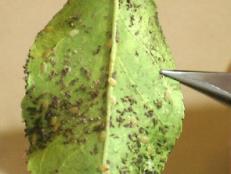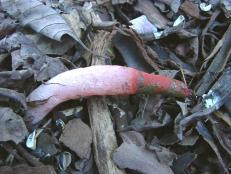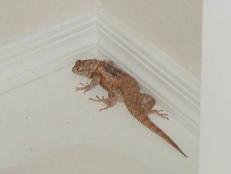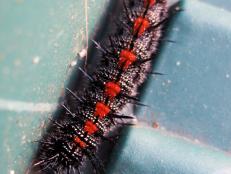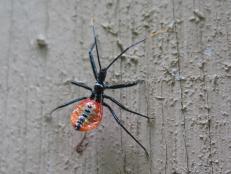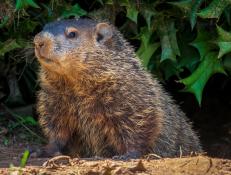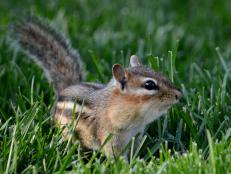White-Lined Sphinx Moth

Although tomato hornworms and tobacco hornworms are unwelcome guests in gardening America, every hornworm doesn't spell doom for some leafy plant in the yard. This hornworm is the caterpillar stage of the white-lined sphinx moth (Hyles lineata), the moth that hovers, hummingbird-like, around tubular flowers like four o'clocks. Although the caterpillar tends to look yellow and yellow-green, markings may differ depending on the climate and weather.
"Sometimes you'll see them with stripes or even solid black when the weather is very hot," says Carl "Bug Man" Olson, associate curator of the University of Arizona's Insect Research Collection.

In late summer and early fall, these caterpillars are often seen migrating along the ground on their way to finding the perfect soil in which to stage their next metamorphosis — into the adult moth stage.
And unless their numbers are excessive, they're unlikely to pose a significant worry for gardeners or orchardists. "Sometimes they might nibble a little bit along the way, but they will have little effect on those plants," he says. The caterpillars have fed on a wide range of plants — purslane, portulaca, wild grape, and a host of weeds and various desert shrubs; they tend to stick with low, shrubby plants.
Olson says the mass movement isn't clearly understood, but one reason may be that the caterpillars are looking for looser soil than the clay soil that may have supported the plants on which they fed. "The desert plants that were their original food either grow in more clay-like soil that's hard for digging, or [the plants were] depleted and the caterpillars are searching for a little more [food] before they change."
And one more piece of good news: The horn of the white-lined sphinx moth caterpillar is not a stinger.






